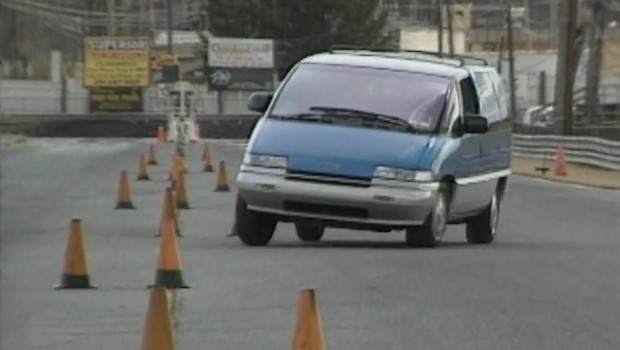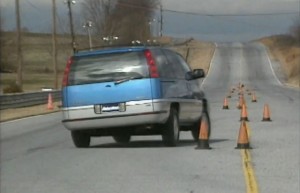Chevrolet

Published on September 29th, 2022 |
by BajaBusta
1992 Chevrolet Lumina APV 3.8 Test Drive

Chevrolet’s front-drive minivan – Lumina APV, gained standard 4-wheel anti-lock brakes and a new powertrain option for 1992.
The new drivetrain consisted of a 165-horsepower 3.8-liter V-6 mated to a new electronically controlled 4-speed automatic transmission. It was optional on all versions. The combination upped maximum towing capacity to 3000 pounds, 1000 more than before. The base powertrain remained a 120-horsepower 3.1-liter V-6 and 3-speed automatic.
Standard features included 15- instead of 14-inch standard wheels and tires, 4-way manual driver’s seat, and a roof panel radio antenna replacing a mast type. New options included pop-out sunroof, remote keyless entry, and separate rear air conditioner. There were also some minor suspension adjustments that GM said improved ride comfort.
As before, the APV possessed a basic “space-frame” design with most outer body panels made of fiberglass-like composite materials. Lumina APV (for All Purpose Vehicle) was the only one of the dustbuster trio that offered a commercial/cargo model with blanked out rear side windows.
The new 3.8-liter V-6 and standard ABS were welcome improvements that made the van worth considering, but it didn’t offer a driver-side airbag like Chrysler’s minivans, Toyota’s Previa, and Ford’s Aerostar. Also the sloped-nose styling and odd dash details made driving more taxing than it should have been.The cargo hold wasn’t as tall as that of most rivals, though available seating packages scored high for versatility and convenience.
1990 Chevrolet Lumina APV Test Drive
1990 Plymouth Voyager vs. Chevrolet Lumina APV Manufacturer Promo
1990 Chevrolet Lumina APV Commercial
1995 Chevrolet Lumina APV Commercial – Alec Baldwin
1990 Chevrolet Lumina APV Dealer Training Manufacturer Promo Video
1987: Chevy’s Nomad
1992: The General’s Van Plan
1990 Pontiac Trans Sport Test Drive
Tags: 1992, 1992 Lumina APV, Chevrolet, Chevrolet Lumina APV, Chevy, Chevy Lumina APV, consumer reports, Dustbuster Minivans, Dustbuster Vans, General Motors, GM, how reliable are, how reliable is, jd power, Lumina APV, Motorweek, Oldsmobile Silhouette, Pontiac Transport, Review, road test, Roadtest, test drive, Testdrive


